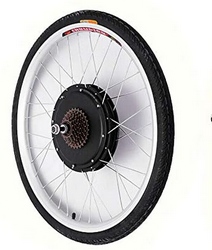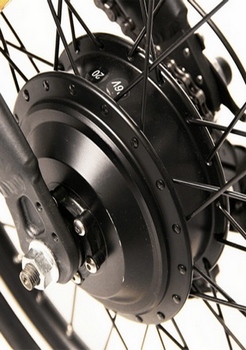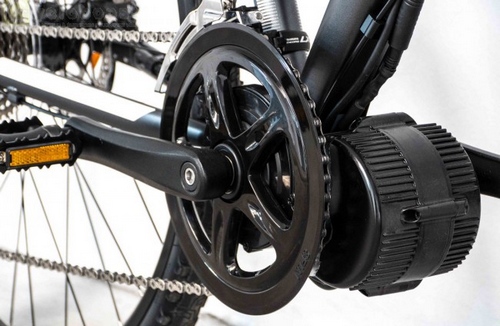The beginner can quickly feel lost in front of the diversity of the offer. Here we present the main categories of engines and review the characteristics that differentiate them from each other. We point to pros and cons that should be considered trends rather than absolute truths, as they often depend on the conditions of use. Nevertheless, knowing these elements can help to make the best choice according to the intended use: long / short distance, plain / mountain, very sporty cyclist / not sporty …
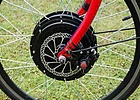 |
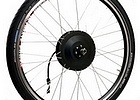 |
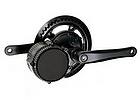 |
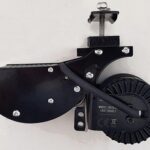 |
The motorization of a bicycle does not only include the motor, other materials are necessary:
- the controller which is an electronic circuit that delivers energy from the battery to the motor,
- the power level selector (whether or not associated with the display console) which transmits to the controller the energy level to be delivered to the engine,
- the display console that allows you to view various information: level of assistance, power delivered to the engine, speed, distance traveled etc …
- the pedaling sensor or torque sensor that informs the controller of the cyclist's pedaling,
- The trigger (optional) that transmits to the controller a level of energy to be delivered to the motor without pedaling.
The Direct Drive "wheel" motor
It is inserted into a wheel instead of the hub, at the front or rear of the bike. The front wheel model can also be installed on a trailer. The characteristic "Direct Drive" means that the transmission is carried out directly, without gear. Advantages: it is a reliable engine, it does not require special maintenance. It is a type of engine capable of generating electricity during braking and descents to recharge the battery: this is called regeneration. Disadvantages: its weight (~4 to 9kg) is generally higher than other types, at equal power. In high ribs, it may tend to heat up and assistance to become less effective. You can read several testimonials to this effect in the "Construction and use" section. However, it is possible to avoid this disadvantage by selecting certain elements of the bike (wheel diameter / nominal battery voltage). We will come back to this topic in more detail in a future article.
The reduced "wheel" motor
It is inserted into a wheel instead of the hub, front or rear; The front wheel model can also be installed on a trailer. The "reduced" feature means that it has gears inside. Interests: its weight is reasonable (~2.5 to 5kg). It does not brake the bike when pedaling without assistance. Its effectiveness is good in the ribs. Disadvantages: the gears must be maintained regularly or even changed after several thousand km. It does not allow regenerative braking or battery charging on descents (apart from 1 single specific model).
The "pedal" motor
This motor is inserted instead of the original bottom bracket, it is compatible with a large number of bikes. It has gears inside. Interests: its weight is reasonable (~4 kg). It is very effective in the ribs. It does not brake the bike when pedaling without assistance. Disadvantages: the gears must be maintained regularly or even changed after several thousand km. It does not allow regenerative braking or battery charging on descents.
The "roller" engine
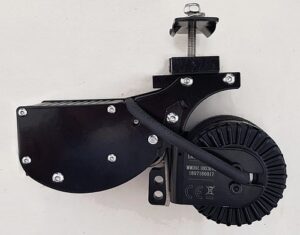 This motor is attached to the frame of the bike so that a roller rubs on a tire of the bike. Interests: it is a very light engine (~1kg). It is detachable, so it does not brake the bike if pedaling without assistance. Disadvantages: its power is often lower than that of other categories of engines. No regeneration in the descents. Due to its characteristics, it will be more suitable for sporty cyclists who are satisfied with limited assistance for an attractive weight.
This motor is attached to the frame of the bike so that a roller rubs on a tire of the bike. Interests: it is a very light engine (~1kg). It is detachable, so it does not brake the bike if pedaling without assistance. Disadvantages: its power is often lower than that of other categories of engines. No regeneration in the descents. Due to its characteristics, it will be more suitable for sporty cyclists who are satisfied with limited assistance for an attractive weight.

